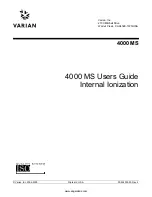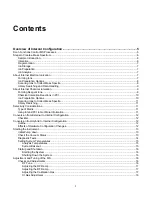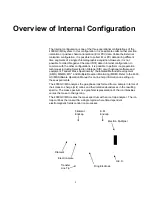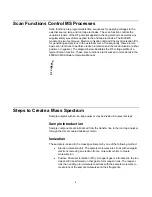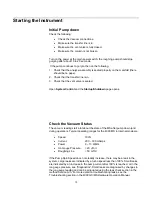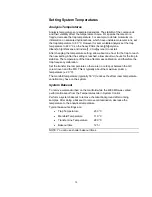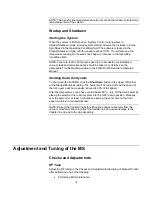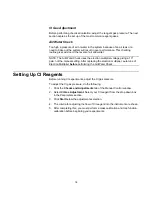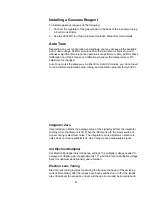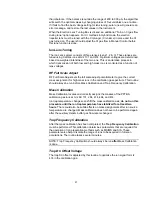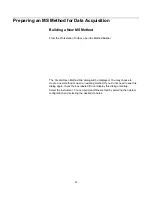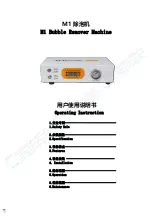
7
Fragmentation
Depending on the structure of the molecular ion and the excess internal energy
remaining after electron impact, there may be further unimolecular decomposition
of some of the molecular ions to form various fragment ions and neutrals.
Unimolecular decomposition happens in picoseconds, the time scale of a few
molecular vibrations, effectively occurring at the same time as ionization.
Ion Storage
The molecular and fragment ions are stored and stabilized in the ion trap cavity,
where they travel in defined orbits governed by voltages applied between the ring
electrode and the endcap electrodes. Helium buffer gas is also present in the
cavity. It buffers the ions into more compact orbits that produce well-resolved
mass peaks as they are scanned out. Helium is used as a buffer gas because it
is light and does not degrade MS resolution. While helium ions are created in the
trap, they are ejected electronically as soon as they are formed.
Ion Preparation
Once ions are stored in the trap they can be manipulated, if desired. Examples of
ion preparation techniques are tandem mass spectrometry (MS/MS) and
selected ion storage (SIS). Advantages associated with ion preparation methods
are similar to those of other sample preparation methods, e.g., reduction of
background noise and increased selectivity.
Ion Analysis
The stored ions are analyzed by ramping the RF voltage applied to the ring
electrode to a high value, during which time ions from low to high mass are
successively destabilized and ejected from the trap. Supplemental dipole and
quadrupole voltages applied to the endcap electrodes improve the mass
resolution of the process. After ejection, the ions strike a conversion dynode,
initiating a signal multiplication process at the electron multiplier.
Each of the areas above is discussed in general in this guide, and in detail in the
4000 GC/MS Software Operation Manual
.
About Internal Electron Ionization
Internal electron ionization is the most common mode of operation of the 4000
MS. All of the sample ionization, fragmentation, storage, and scanning steps
occur within the confines of the ion trap. Electron ionization generates fragments
that are specific to the compound, providing fingerprint spectra. It is, however,
not selective and will show ions for all compounds present. EI is sensitive but the
sensitivity can be improved by reducing the interfering ions using ion preparation
techniques.
Forming Ions
In the EI mode, electrons are gated into the ion trap cavity during the ionization
period. These electrons collide with the neutral sample (or Analyte) molecules A,
removing an additional electron to create energetically-excited molecular ions
∗
+
A
. Some of the excited molecular ions equilibrate through collisions with
Summary of Contents for 4000 MS
Page 2: ......

